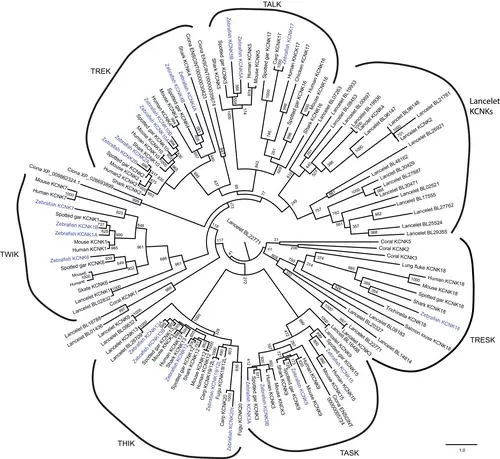Fig. 2
- ID
- ZDB-FIG-240802-13
- Publication
- Park et al., 2024 - Evolution of two-pore domain potassium channels and their gene expression in zebrafish embryos
- Other Figures
- All Figure Page
- Back to All Figure Page
|
Maximum likelihood phylogeny of two-pore domain potassium (K2P) channels. Some representative species (human, mouse, zebrafish, spotted gar, shark, lancelet, tunicate, and coral) were analyzed. Numbers at each node indicate the supporting values based on 1000 bootstrap replicates. Branch lengths are proportional to expected replacements per site. The phylogeny was inferred with the Jones–Taylor–Thornton model model plus gamma distribution using PhyML. All the six subtypes of K2P channels were grouped together and indicated with curved lines. The zebrafish K2p channels were highlighted in blue. Many lancelet K2P channels formed a distinct group on the phylogenetic tree. TALK, TWIK-related alkaline pH-activated K+; TASK, TWIK-related acid-sensitive K+; THIK, tandem pore domain halothane-inhibited K+; TREK, TWIK-related K+; TRESK, TWIK-related spinal cord K+; TWIK, tandem of pore domains in a weak inward rectifying K+. |

